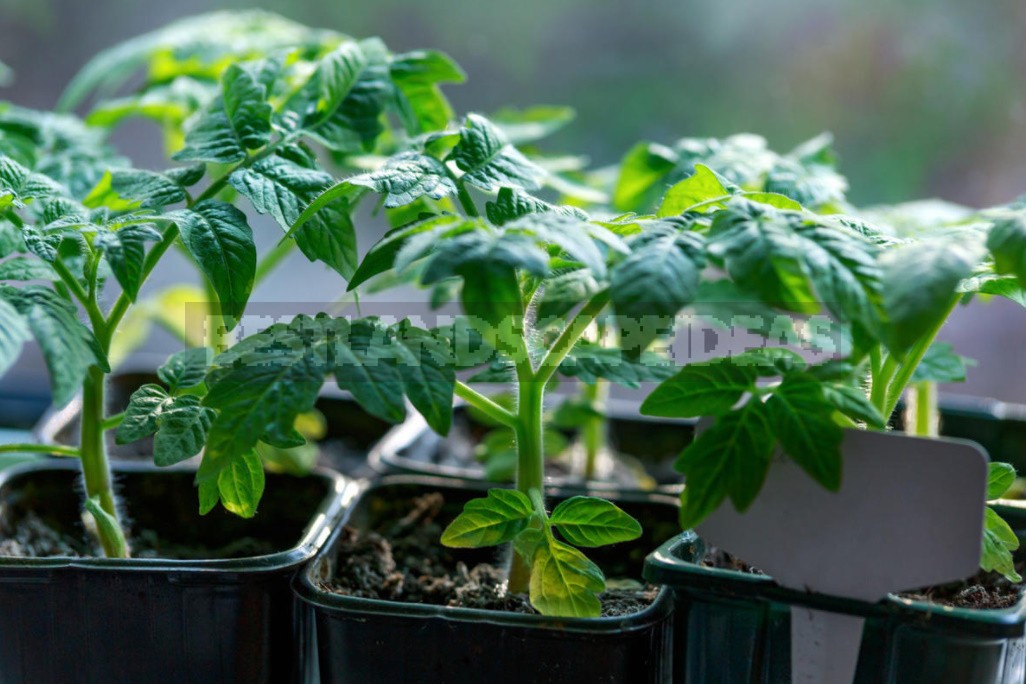
Even if you successfully grow tomato seedlings for many years, it is not a fact that once again everything will go well. A wealth of practical experience is, of course, good, but the key to success is not only in it. The main causes of problems with seedlings can be divided into three categories: poor soil, mistakes in the care, poor-quality seeds. Before moving on to specific examples, let’s pay a little attention to each of them, it’s important!
Good soil – the basis of the basics
It would seem that we know everything about growing tomatoes, including the requirements for the soil mixture. Nevertheless, in most cases, it is the soil that becomes the source of problems for seedlings. It seems that everything was done correctly: baking powder was added, the land was decontaminated and even populated with useful micro-flora — and the seedlings still die. Why? Often the main thing escapes attention — the pH of the soil. For tomatoes, the optimal range is between 5.5-7.5. If the pH is lower, problems can not be avoided. See for yourself how dangerous acidic soil is for plants, especially at the early (most important!) stage of development:
- Protein synthesis is reduced, protein and carbohydrate metabolism are disrupted;
- Noticeably slows down or stops the development and growth of the root system;
- At a pH level below 4.5, a number of nutrients — nitrogen, potassium, calcium, sulfur, phosphorus, molybdenum, and magnesium – are practically not absorbed. And that’s not the worst news! Much worse is that iron, copper, manganese, and zinc become poisons for plants.
The conclusions are disappointing: in acidic soil, tomatoes, if they survive, will still not give a good harvest, and the variety has nothing to do with it. And it may also happen that by the time of landing on the bed, the seedlings will die. If none of these options are included in your plans, be sure to determine the pH level of the soil before sowing! Whether you do a soil analysis in a specialized organization or measure it yourself with a household pH meter or indicator strips is not the point. It is important that the seeds get into favorable conditions.
If it is impossible to contact the laboratory for any reason, and the accuracy of your own measurements is in great doubt, it is better not to risk it and buy ready-made soil. The best choice is a special composition for tomatoes.
Do not Harm by Caring for Seedlings!
It is not for nothing that seedling care is called complex, because all its factors are irreplaceable and equally important. Everything should be normal: the desire to feed more plentifully, to water better will not lead to anything good.
It is worth recalling that for the normal development of plants, a certain temperature regime is needed, which depends on the age of the seedlings, the time of day, and the degree of illumination. Tomatoes are hardy, and a small deviation in one direction or another may not even affect the appearance, but the quality of the seedlings will lose.

Take note of one of the most insidious mistakes that often escapes attention — cold soil: if its temperature is below +14°C (57.2°F), the roots will simply stop working. Even in a fertile moist substrate, the plant will starve and suffer from a lack of moisture. The desire to get a good drink often leads to another problem — overflow, and from it to all sorts of rottenness. It is also worth avoiding the other extreme — overdrying: trying to survive, the plant will shed its leaves so as not to waste precious moisture on them.
Infected and Defective Seeds
Yes, sometimes the root of all problems is in the seeds. You can get rid of pathogens and fungal spores on the shell by pre — sowing treatment-disinfection. But we are powerless against viruses that are more securely hidden — in the cells of the embryo. There are two ways out — either find a reliable producer, or make do with the seeds of your collection.
So, the main reasons for the appearance of problems in tomato seedlings, we have identified-take them into account, and the risk of complications will be minimized. And now let’s look at specific examples, draw conclusions, take into account other people’s mistakes in order to avoid our own.
Why do tomato seedlings turn yellow leaves
There can be a lot of reasons — both one and several at the same time. Analyze the situation and, using the exclusion method, find the true one. Most often, young tomatoes react like this:
- On acidic soil – urgently transplant the seedlings into good soil;
- Lack of nitrogen – feed the seedlings with nitrogen-containing fertilizer;
- Lack of nutrition (poor soil) – feed with a full complex mineral fertilizer;

- High temperature and low humidity – bring the parameters back to normal;
- Drying of the earthen lump – immediately pour, preferably in several steps;
- Stagnation of water at the roots – exclude watering for a few days, then water in moderation;
- Systematic mechanical damage to the roots (deep loosening) – pour the root formation stimulator and loosen carefully.
Why do the leaves of tomato seedlings curl
And again, you will have to use the exclusion method, because the external signs of different problems are similar. Leaves can be crowded together:
- Due to lack of nutrition – feed with a complex mineral fertilizer with trace elements;
- Insufficient watering — slightly increase the rate;
- Edema (edema of the foliage of seedlings) – exclude stagnation of water at the roots, regularly ventilate the room. If possible, increase the distance between the plants so that the air circulates freely there. Well, finish lighting up according to the norms;
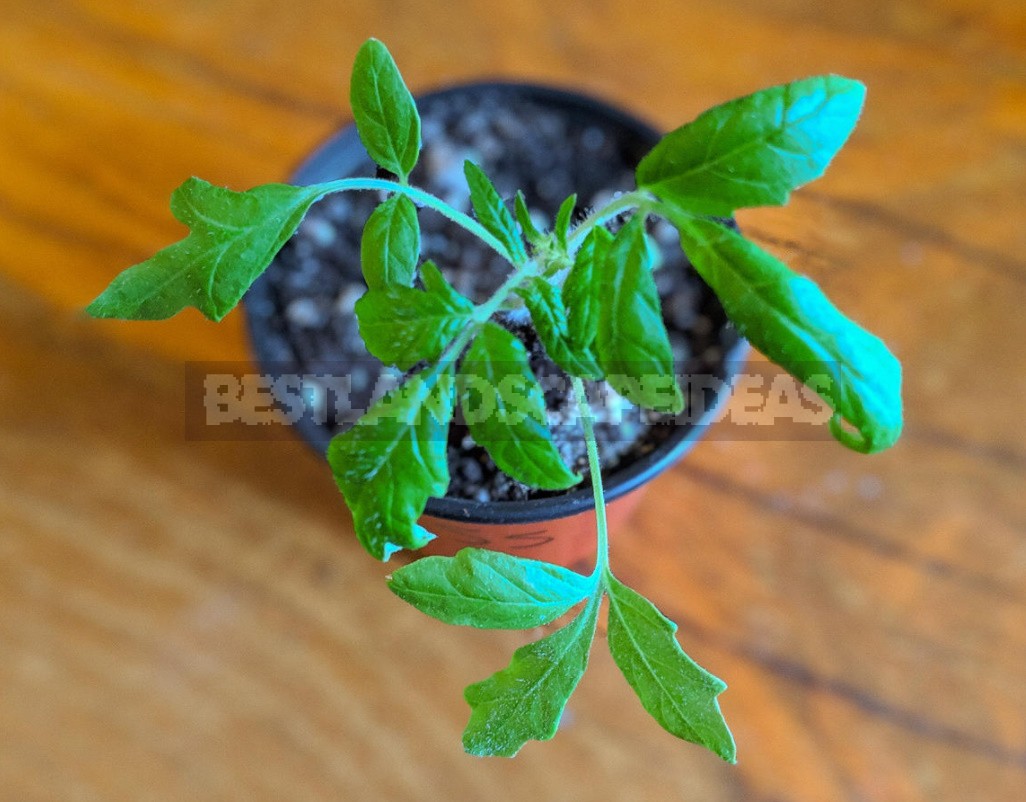
- Non-functioning root system — due to acidic or cold soil, “root suffocation”, insufficient lighting;
- Pests — if an insect or traces of its activity have been detected, treat the plant with a broad-spectrum insecticide;
- Genetic predisposition of the variety — if other varieties develop in the same soil and with the same care and look normal, there is no reason to worry;
- Intensive growth — slightly lower the temperature, after a few days the leaves will unfold.
Why seedlings are weak, growing poorly
First of all, determine the pH of the soil. If it is below the norm, then there will be a depressed state, and signs of nitrogen starvation, and other problems that we discussed above. Urgently replace the soil and watch the seedlings for a few days, it should recover quickly.

If the pH is normal, this condition may occur:
- Due to a lack of nutrition — a small volume or an incorrect composition of the soil (it does not retain moisture well, so the nutrients are washed out when watering), poor soil. Transplant the seedling, paying special attention to the moisture capacity of the new soil, feed it with a complex of mineral fertilizers;
- Lack of nitrogen – fertilizing with nitrogen-containing drugs will correct the situation;
- Light hunger – tomato seedlings need a lot of light (from 15 to 18 hours a day). But do not overdo it: for the normal development of plants, “night” is also needed, at least for 6 hours a day;
- Excessive heat and dryness — bring the temperature and humidity of the air back to normal;
- Irregular or insufficient watering — if the soil in the container dries up regularly and for a long time to the full depth or the volume of water is not enough for the plant. Organize regular watering in sufficient volume.
Tomato seedlings have outgrown. Continue to grow or plant a new one?
One of the few problems when you don’t have to check the pH level of the soil. There are two solutions: to sow again (if the deadlines are not missed) or to restrain growth — you can choose. What will help to stop the growth of seedlings:
- Transshipment to another container with the deepening of the stem on cotyledon leaves,
- Reducing the volume and frequency of watering,
- Reducing the temperature in the room,
- The use of retardants.
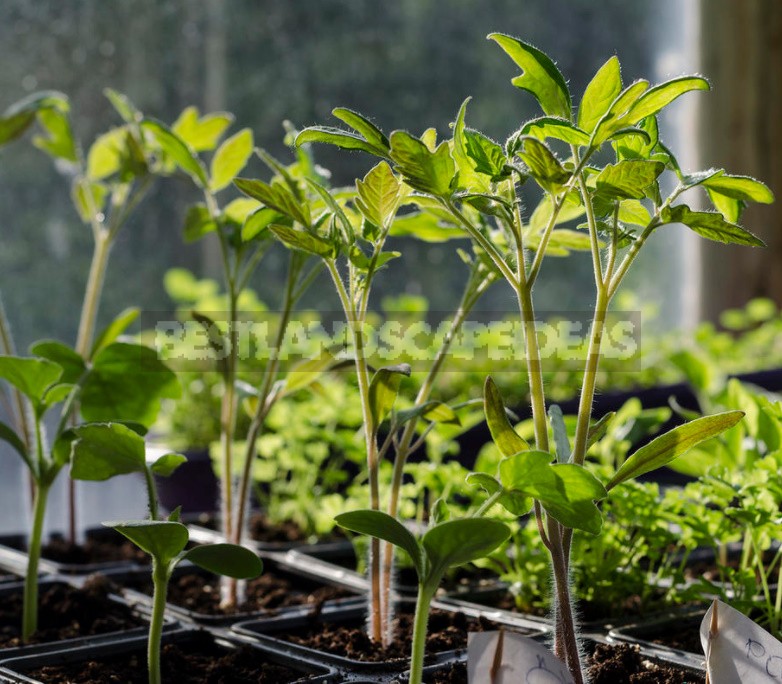
There is also an alternative option: trim the top part and root it. On the mother plant, side shoots will grow. As a result, you will get twice as many tomato seedlings!
As you know, the problem is easier to prevent than to solve. Therefore, prepare for sowing thoroughly, paying special attention to the choice of high-quality soil. Strictly follow the recommendations for care, and your tomato seedlings will be strong and healthy!

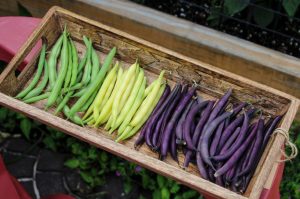
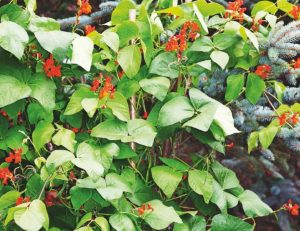

Leave a Reply